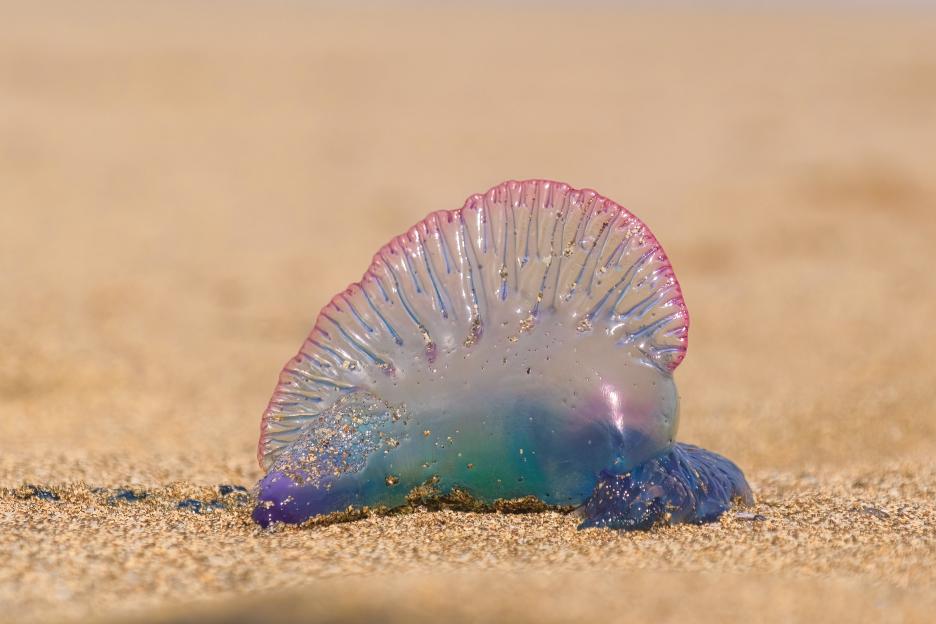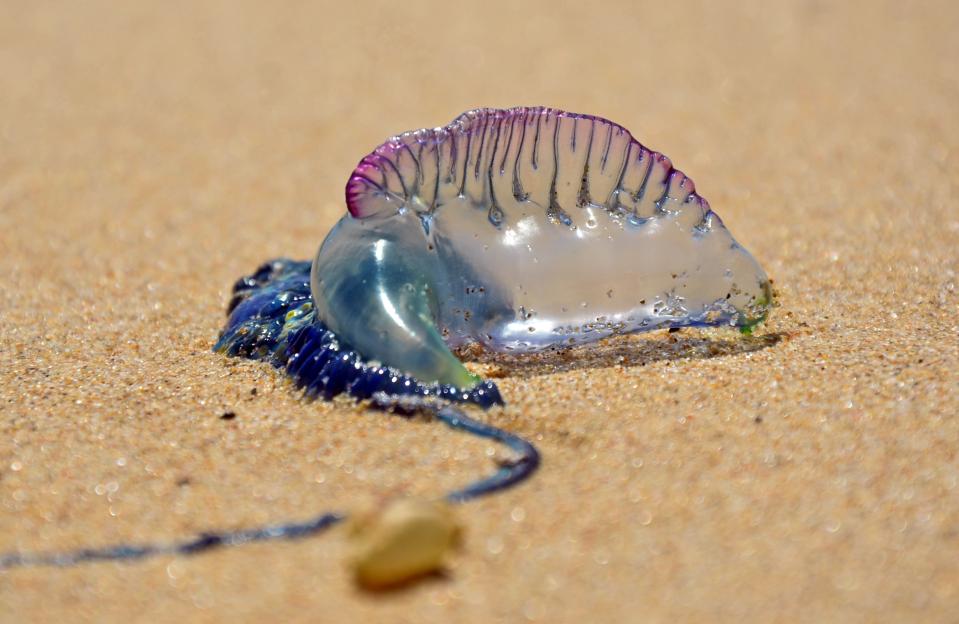AN urgent warning has been issued after the world’s most dangerous jellyfish, known for its killer sting, washed up on a popular beach.
Officials are urging the public to stay cautious and avoid any contact with the creatures.
 Beachgoers are being urged to remain alert and report any new sightings to the Coastguard immediatelyCredit: Stephen Frink
Beachgoers are being urged to remain alert and report any new sightings to the Coastguard immediatelyCredit: Stephen Frink
 While fatalities are rare, Britannica warns that allergic reactions or heart issues triggered by the venom can sometimes be deadlyCredit: Hansel Gonzalez
While fatalities are rare, Britannica warns that allergic reactions or heart issues triggered by the venom can sometimes be deadlyCredit: Hansel Gonzalez
 Despite their striking appearance, these sea creatures are extremely dangerousCredit: Bruno Guerreiro
Despite their striking appearance, these sea creatures are extremely dangerousCredit: Bruno Guerreiro
The alert was raised by Port Talbot Coastguard after several , also called “Floating Terrors,” were spotted along Aberavon Beach.
Often mistaken for jellyfish because of their translucent, balloon-like bodies and long, trailing tentacles, the Portuguese Man O’ War is actually a siphonophore, a colony of specialised organisms working together as one.
Despite their striking appearance, these are extremely dangerous.
Their venomous tentacles can deliver a powerful sting, causing painful red welts, blisters, and in severe cases, fever, shock, or even heart and lung complications.
While fatalities are rare, Britannica warns that allergic reactions or heart issues triggered by the venom can sometimes be deadly.
Even after the organism has died, its tentacles remain capable of stinging, making those washed ashore just as hazardous as live ones.
A Port Talbot Coastguard spokesperson said: “We’re urging everyone visiting Aberavon Beach to stay vigilant.
“Do not touch these creatures, even if they appear dead, as their tentacles can still deliver a painful sting.”If you are stung, rinse the affected area with seawater – not fresh water – and carefully remove any tentacles using a credit card or similar object.
“Immerse the area in water as hot as can be tolerated for at least 30 minutes to help neutralise toxins, and seek medical advice by contacting HM Coastguard or a doctor.”
The Coastguard confirmed they will not be removing the creatures, as they are likely to be carried back out to sea naturally with the returning tide.
This latest warning comes amid a rise in sightings of the Portuguese Man O’ War along the Welsh coast.
In September, the species was spotted on Pembrokeshire’s Freshwater West Beach, where photographer Gareth Davies captured an image of one during a visit.
His sighting came just days after similar reports along the Gwynedd and Anglesey coastlines.
Beachgoers are being urged to remain alert and report any new sightings to the Coastguard immediately.
Local authorities are advising beachgoers to report any further sightings to the Coastguard and to avoid handling marine life.
Lifeguards are expected to monitor the beach over the weekend as tides and winds shift.
and dog walkers are reminded that while the risk of fatality is low, the sting from a Portuguese Man O’ War can cause excruciating pain and dangerous reactions.
Experts recommend wearing protective footwear and keeping a safe distance from anything unusual washed up along the tide line.
What is the Portuguese man o' war?
THE Portuguese Man O’War, often mistaken for a jellyfish, is actually a siphonophore – a colony of specialised organisms working together.
Known for its deadly sting, this marine menace has tentacles that can stretch up to 30 feet and deliver excruciating pain and permanent scarring.
In rare cases it can even cause death, particularly in individuals with allergies.
Its vivid blue, purple, and pink hues serve as a natural warning to keep away.
Although typically found drifting through the open waters of the Atlantic Ocean, sightings in the Mediterranean – especially around Mallorca and Menorca – have led to temporary beach closures in recent years.
The Man O’War is a carnivorous predator, using its venom to paralyse small fish, shrimp, and plankton before dragging them into its digestive polyps.
Despite its fearsome defences, it does have a few natural predators, including loggerhead turtles, blue sea slugs, and the remarkable man-of-war fish, which has evolved to live among its toxic tentacles.
This latest warning comes amid a rise in sightings of the Portuguese Man O’ War along the Welsh coast.
 This latest warning comes amid a rise in sightings of the Portuguese Man O’ War along the Welsh coastCredit: KarenHBlack
This latest warning comes amid a rise in sightings of the Portuguese Man O’ War along the Welsh coastCredit: KarenHBlack






